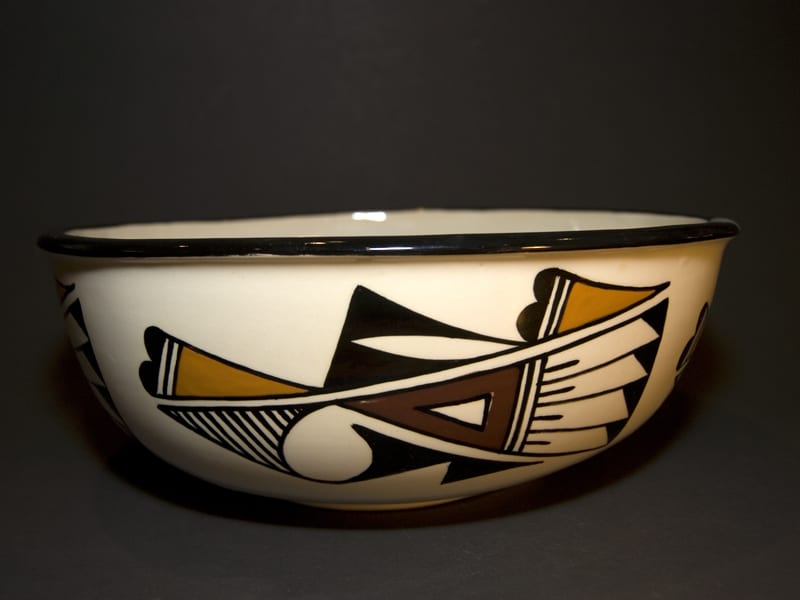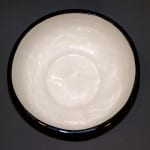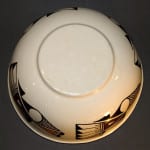Commercial slip-cast, kiln-fired bowl (unsigned) with traditional Hopi designs in underglaze pigments (probably decals) and a clear overglaze
The seller believed the bowl was hand-decorated by Loretta Silas. Although entirely commercial, it may have been made by Ms. Silas at a hobby-shop for use in her home.
Shortly before his death in 1994, I expressed to Rick Dillingham my disdain for such hobby-shop Acoma greenware. He pointed out that the reality was more complicated than my simple statement. Traditional hand-built, painted, and outdoor-fired Acoma pots have become so valuable since they became “fine art” the 1970s that native potters could no longer afford to use them in their homes and village. In contrast, kiln-fired greenware is much easier to make, less valuable, and better able to contain liquids than traditional ware. Ironically, then, the traditionally made pottery is made for “export” to the Anglo art world, while pots made using modern Anglo techniques are imported into the village for indigenous use. Which is the “true” Acoma pottery: the pots made to sell or the pots made for use at home?
As Lea McChesnery (2003:359ff ) has established, traditionally hand-made and fired pottery still plays an integral part in the social life of Hopi and Hopi-Tewa potters and the solidification of village social relations. Nevertheless, as was true earlier in Acoma, much traditionally made Hopi and Hopi-Tewa pottery has become too valuable for its makers to use in a utilitarian function at home. Thus, glazed greenware bowls, such as pot 2007-14, are now commonly used as serving dishes in Hopi homes. In July 2007, during the Niman ceremony at Mishongnovi, I was served corn stew from a bowl very much like 2007-14.




